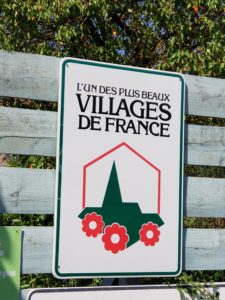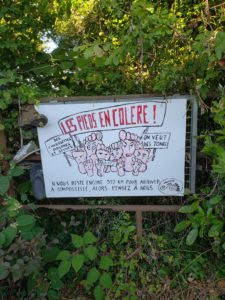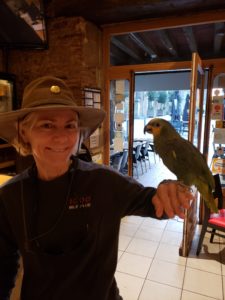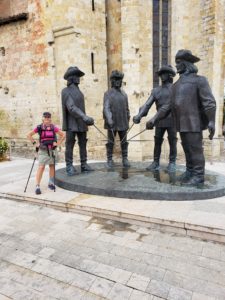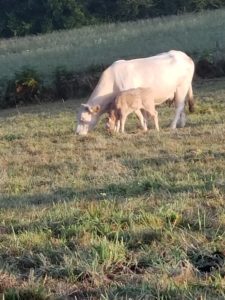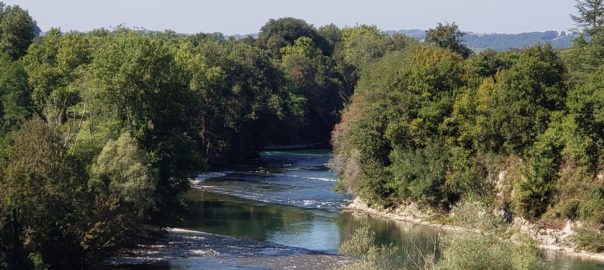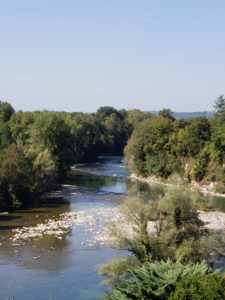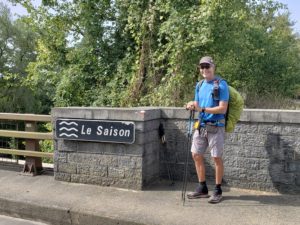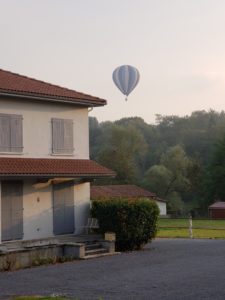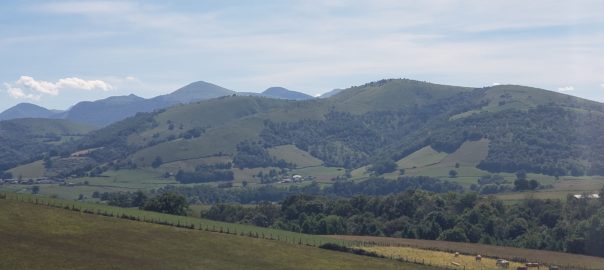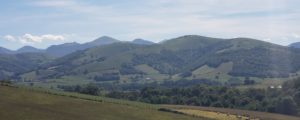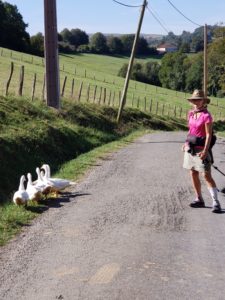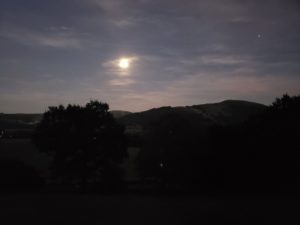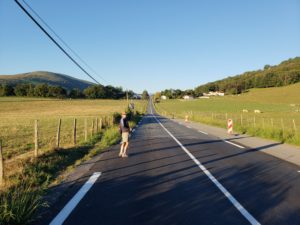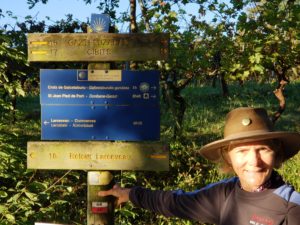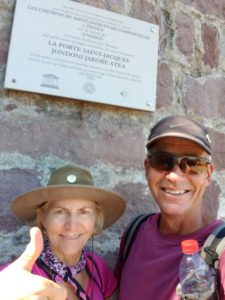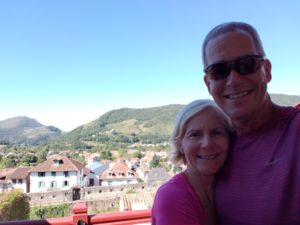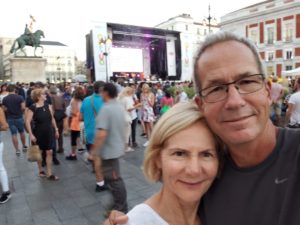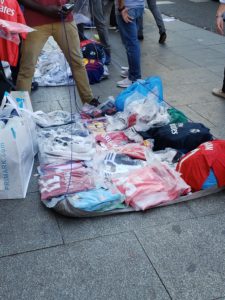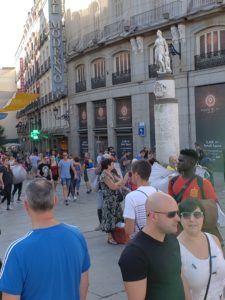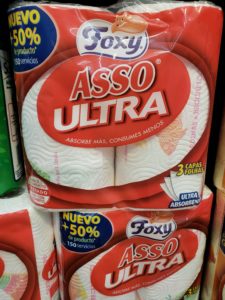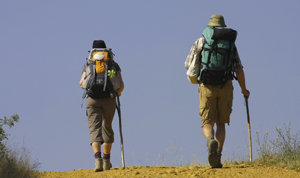Okay, I’m working this just minutes before the car arrives to take us to the airport, so if it seems incomplete … it is.
Gear: This is what Bill is taking. Diane’s equipment is similar. Please note that this equipment list reflects too much time in planning! It could be done in a much simpler fashion, but that doesn’t seem to be Bill’s (or Diane’s) nature!
Let’s start with shoes: The pair in the upper left are running shoes (yes, we still plan on running even though we’re walking 15 miles/day). They are Nike Lunar Glides and combine light weight and moderate support. The pair on the upper right are Brooks Cascadia’s. They are a well recognized as a good pair of trail running shoes often used for extended hiking. The flipflops in the front-middle are Target, $1.99 sandals. And very well used! Perfect to be low weight and useable for the shower, etc.
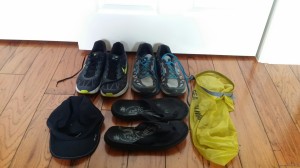
Now we’re on to the extensive wardrobe. Upper right is a long sleeved dress shirt … sort of. Upper middle is hiking shorts, upper left is a pair of running shorts. Yes, we really do think we’re going to run. Bottom row includes 1 long sleeved tee shirt, 3 performance tee shirts, and 3 wash and wear underwear. That’s it for standard clothes.
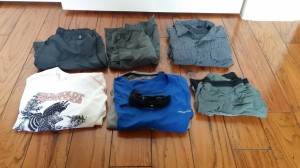
Warmth comes next. We’re hiking at the beginning of Fall so we expect to see cooler temperatures and a good bit of rain. Upper left is a pair of light weight rain pants, gaiters, down jacket, and rain proof wind breaker. Lower row are smart wool socks (easy wash and dry), icebreaker 260 sweater, balaclava, and gloves. These should hold up through freezing conditions.
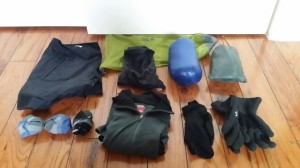
Now, the first aid. Band aids, mole skin and ibuprofen top the list here.
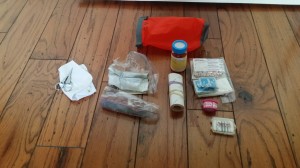
How about the frivolous? Hard to see, but we have a stove, a pot for boiling water, and enough Starbucks Via to fuel a nuclear power plant. We just don’t want to be”caught out” without our early morning caffeine fix!
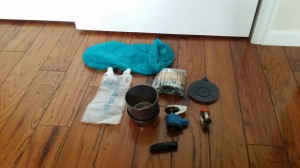
Personal stuff: razors, toothbrush and paste, etc. Also, 2 spare reading glasses because, hey, we’ve already established that Bill can’t read so good without glasses.
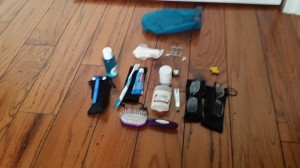
Electronics:one led headlamp, an led lamp, 1 Power Monkey charger, cords, running watch, electrical adapters for Spain, etc.

Still to be shown are the sleeping bag (possibly useful), bivy (very useful), walking poles, and backpack.

